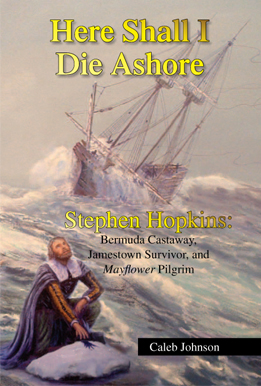Cooking and Food
A distiller, illustrated in Gervase Markham's Countrey Farme (1616), a book that was owned by Mayflower passenger Myles Standish.
During the Mayflower's voyage, the Pilgrims' main diet would have consisted primarily of a cracker-like biscuit ("hard tack"), salt pork, dried meats including cow tongue, various pickled foods, oatmeal and other cereal grains, and fish. The primary beverage for everyone, including children, was beer. The Pilgrims believed (and rightly so) that water was often contaminated and made people sick; the distillation process killed most parasites and bacteria. Wine may also have been drunk, as was aqua-vitae--a more potent alcohol. The occasional juice from a lemon was also taken to prevent scurvy.
Once the Pilgrims had settled themselves in Plymouth, they slowly began to learn about other food sources. The bay was full of fish, although the Pilgrims had poorly equipped themselves for fishing. There were clams, mussels, and other shellfish that could be gathered, and the bay was also full of lobster. Waterfowl such as ducks and geese were hunted, as were wild turkeys and other birds, and even the occasional deer. The Pilgrims had also brought seeds with them to plant English vegetable and herb gardens, as well as larger crops such as barley, peas, and wheat. And while exploring Cape Cod, they discovered and "borrowed" large baskets full of Indian corn they had found buried in the ground on a hill they named Corn Hill. The Native Americans in the area buried their corn seed in large baskets to preserve it for the next year's planting season.
After they made contact with their Wampanoag neighbors, through the assistance of "Squanto" (Tisquantum), the Pilgrims learned the Indian techniques for planting and growing corn (which involved manuring the ground with shad caught in Town Brooke), and learned how to catch eel in the muddy riverbeds.
Each house had a prominent fire pit and chimney, where the cooking was normally done by the women and girls. Several "recipe books" from the period exist, and provide some interesting insights into cooking at the time. Perhaps the most famous of these is Gervase Markham's The English Housewife, first published in 1615. A recipe for cooking a young turkey or chicken reads:
If you will boil chickens, young turkeys, peahens, or any house fowl daintily, you shall, after you have trimmed them, drawn them, trussed them, and washed them, fill their bellies as full of parsley as they can hold; then boil them with salt and water only till they be enough: then take a dish and put into it verjuice [the juice of sour crab-apples] and butter, and salt, and when the butter is melted, take the parsley out of the chicken's bellies, and mince it very small, and put it to the verjuice and butter, and stir it well together; then lay in the chickens, and trim the dish with sippets [fried or toasted slices of bread], and so serve it forth.
For roasting venison [deer], the another recipe says:
[A]fter you have washed it, and cleansed all the blood from it, you shall stick it with cloves all over on the outside; and if it be lean you shall lard it either with mutton lard, or pork lard, but mutton is the best: then spit it [put it on a spit that can be hand-rotated over the fire] and roast it by a soaking fire [a slow-roasting fire], then take vinegar, bread crumbs, and some of the gravy which comes from the venison, and boil them well in a dish; then season it with sugar, cinnamon, ginger and salt, and serve the venison forth upon the sauce when it is roasted enough.
For sauce for a turkey, another recipe says:
Take fair water, and set it over the fire, then slice good store of onions and put into it, and also pepper and salt, and good store of the gravy that comes from the turkey, and boil them very well together: then put to it a few fine crumbs of grated bread to thicken it; a very little sugar and some vinegar, and so serve it up with the turkey: or otherwise, take grated white bread and boil it in white wine till it be thick as a galantine [a sauce made from blood], and in the boiling put in good store of sugar and cinnamon, and then with a little turnsole [a plant used to as red food coloring] make it of a high murrey color, and so serve it in saucers with the turkey in the manner of a galantine.



